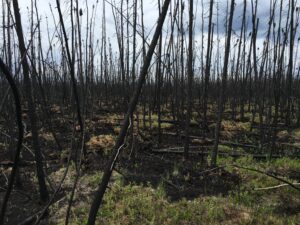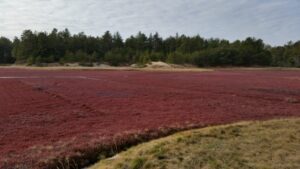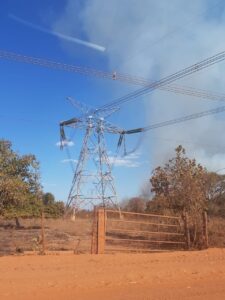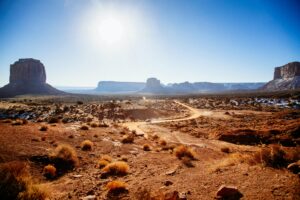Will warm oceans lead to ‘weird’ weather patterns this winter?

Dr. Jennifer Francis of the Woodwell Climate Research Center joined FOX Weather on Thursday morning and explained why all bets are off when it comes to the predictability of what type of weather patterns we can expect this winter.
Alaska’s snow crabs suddenly vanished. Will history repeat itself as waters warm?

ABOARD THE FISHING VESSEL INSATIABLE – Garrett Kavanaugh grabs a fistful of freshly cooked crab and stuffs it into his mouth, a giant smile on his face, as his feet brace against the rolling sea beneath the deck of his boat.
“Oh yeah,” he says. “That’s what it’s all about.”
As the deck of his 58-foot-long boat rolls on the swells of the Gulf of Alaska, Kavanaugh, 24, cracks another crab leg between his tattooed fingers.
Rangeland soil health conference recap

Last month The High Lonesome Ranch hosted the Woodwell Climate Research Center and friends for a small gathering of great minds. The Rangeland Soil Health Conference, sponsored by the Mighty Arrow Foundation, was three days of panels, discussions, and workshops centering the role of western range management in climate mitigation strategies.
The first panel featured practitioners from large ranches in California, Colorado and Nebraska. There was a mix of production oriented producers and science oriented ranches. Each ranch had different goals in order to achieve their desired outcomes, but all recognized the various ecosystem services provided by good management of these landscapes. The speakers dove into some nitty gritty details, from how to account for elk grazing pressure to thoughts around market place offerings such as virtual fencing and carbon credits.
Continue reading on High Lonesome Ranch’s website.
New study shows surprising effects of fire in North America’s boreal forests

A new study, using a first-of-its-kind approach to analyze satellite imagery from boreal forests over the last three decades, has found that fire may be changing the face of the region in a way researchers did not previously anticipate.
Historically, fires in North American boreal forests have led to coniferous trees being supplanted by deciduous trees, which are faster growing, take up more carbon and reflect more light, leading to cooling of the climate and decreased likelihood of fire.
The study, led by Northern Arizona University and published today in Nature Climate Change, found that surprisingly, while forests do become more deciduous, they don’t stay that way; a few decades later, the same forests gradually start to shift back toward coniferous trees.
Cranberry growers are bringing wetlands back from the dead
In Massachusetts, the onetime cranberry capital of the world, former bogs are transforming into thriving, carbon-storing swamps.

When Glorianna Davenport and her husband, Evan Schulman, decided in the early 2000s to stop growing cranberries after two decades in the business, they were left with a difficult choice. They could sell their land, parts of which had been farmed for well over a century, to a developer and watch it be “chopped up into small lots,” as Davenport puts it. Or they could fight to keep it whole.
Continue reading on Reasons to be Cheerful.
From the Silo – The Road to COP 28: Episode 2

The first episode in our series leading up to the COP28 summit in November will be distributed in two parts. This episode, called the Road to COP28, features the second half of a roundtable conversation hosted by Rachel Kyte, Dean Emerita of the Fletcher School at Tufts University. Senator Ben Cardin from Maryland also joins the conversation to share his insight on the COP event and efforts to address climate issues in the US Senate. Our panel of experts includes Professor at the University College London Mark Maslin, Interim Chair of the IUCN Climate Crisis Commission Manuel Pulgar-Vidal, Director of the NASA Goddard Institute for Space Studies Gavin Schmidt, Chief of Government Relations at the Woodwell Climate Research Center David McGlinchey, and Co-Founding Dean Emerita of the Columbia Climate School Ruth DeFries. Their conversation sets the stage for what needs to be done at the upcoming COP 28 conference, and foreshadows what real policy changes, if any, may come as a result. Join us for this extremely critical discussion.
Record-breaking wildfires blanket Brazil with smoke
The blazes comes on top of a drought that has left some river communities stranded.

A record-breaking number of wildfires are blanketing the Amazon with smoke, choking some Brazilian cities and further isolating many Indigenous villages. Over 2,700 wildfires have been reported in the region in the first 11 days of the month — the highest number for any October since 1998, when the record-keeping began.
Air quality became so poor last week in places like Manaus that officials had to postpone the city’s annual marathon, and major universities canceled classes. Philip Fearnside, research professor at the National Institute for Research in Amazonia, said hospitals in the city are full of people who are having respiratory issues. “That should be a wake up call to actually change government policies and individual behavior to actually contain global warming,” he said.
World breaches key 1.5C warming mark for record number of days

The world is breaching a key warming threshold at a rate that has scientists concerned, a BBC analysis has found.
On about a third of days in 2023, the average global temperature was at least 1.5C higher than pre-industrial levels.
Staying below that marker long-term is widely considered crucial to avoid the most damaging impacts of climate change.
But 2023 is “on track” to be the hottest year on record, and 2024 could be hotter.



